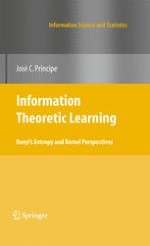2010 | OriginalPaper | Chapter
11. Correntropy for Random Processes: Properties and Applications in Signal Processing
Authors : Puskal Pokharel, Ignacio Santamaria, Jianwu Xu, Kyu-hwa Jeong, Weifeng Liu
Published in: Information Theoretic Learning
Publisher: Springer New York
Activate our intelligent search to find suitable subject content or patents.
Select sections of text to find matching patents with Artificial Intelligence. powered by
Select sections of text to find additional relevant content using AI-assisted search. powered by
